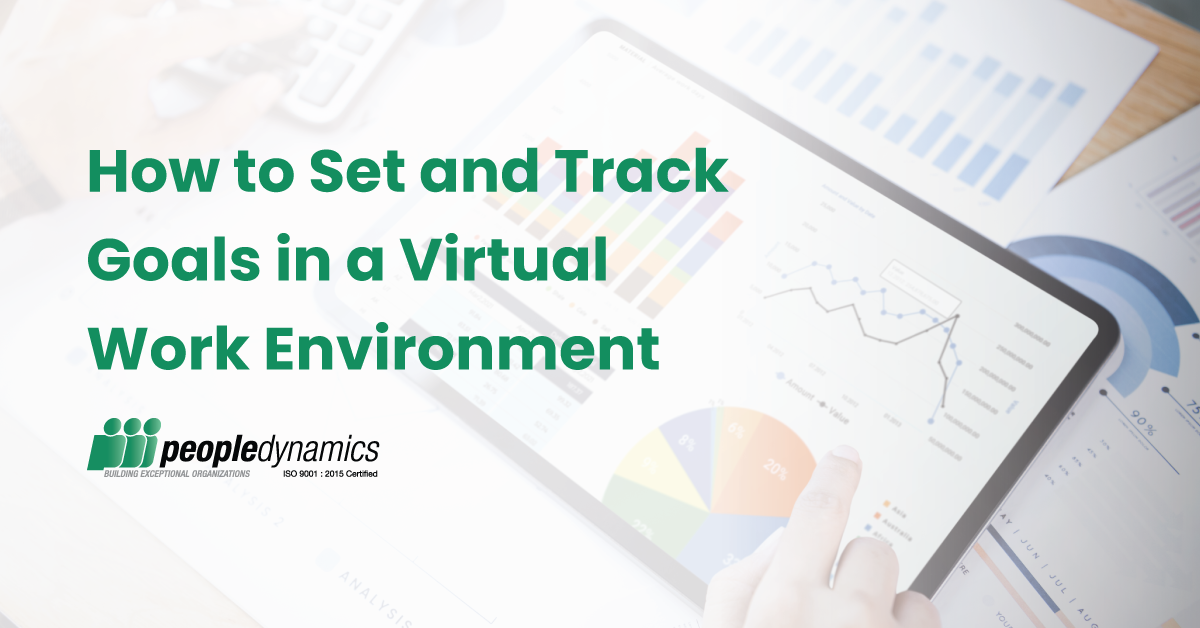Remote work is becoming increasingly popular and for a good reason. Even when used as flexi-work, where people spend some time in the office and some at home, it can lower operations costs, improve life-work balance, and reduce commutes.
Remote and part-time remote roles give people the freedom to work when and where they want, without all the planning and prep of getting ready and commuting each morning.
However, while it makes life easier for building managers and office planners (not to mention employees), it also introduces new logistical challenges for managers and leaders. One of the most common difficulties is setting and tracking goals in a virtual environment. Being able to find the right remote work KPIs for your team is always going to be a unique challenge.
These problems have been prominent in flexible work environments for some time now. How do you balance offering freedom, autonomy, and work ownership with measurable goals that can be tracked and evaluated in a business sense?
This article will investigate the use of time trackers, how to set OKRs, and how to set expectations for remote workers.
Know when to drop the timecard
It makes sense to track hours in certain scenarios, such as if you work in a restaurant or construction with set hours, or your team is underperforming against expectations.
However, clocked hours matter much less in goal-measured positions. If your team hits all of the target KPIs you set for them in five hours instead of eight, managers should count that as a win and only bring in time tracking when results are lacking.
Data shows the average office worker is only optimally productive for about four hours out of an eight-hour workday. Plus, with other research revealing people are more productive with a six-hour day than an eight-hour one, you’re better off dropping hourly requirements.
Instead of using time cards, set targets and goals with weekly expectations for productivity and output. If you can map what normal productivity looks like, you can establish goals and set them for the week so your employees can choose when and how to meet those expectations. You should only have to check time cards and logged hours if you notice work isn’t finished or done well.
Create and set unified OKRs
Objectives and Key Results (OKRs) are one of the most common measurement tools in Agile workplaces. They allow you to set and measure goals on a targeted basis, which is perfect for remote teams.
However, OKRs aren’t meant to be achieved. In fact, if you’re achieving more than 80% of an OKR, it means your goals aren’t ambitious enough. Google even said it never hits more than 60%–70% of its OKRs.
Ask teams to participate and set their own OKRs. If people largely work by themselves, they can do this alone, but you should always have third-party input.
- Set three to five specific and measurable objectives (e.g., get the application to 50%). Avoid vague goals.
- Use tangible terms with measurable results. Doing so improves motivation and helps teams track their progress.
- Keep goals simple and measurable.
- Cascade objectives. Nest individual objectives into team objectives to department objectives to organizational objectives.
Implement goal-based performance management
Goal-based performance management means setting goals around production, targets, and achievements rather than around hours worked. Assess what’s reasonable for your team to accomplish in a week, then establish goals based on that.
Here, it’s important to look at historical data, future goals, the difficulty of the expectations, and anything else you want your team to do. For example, if teams are learning new skills or picking up new technology that week or sprint, their weekly goals should be lower.
- Involve the team. What do they think is reasonable to produce in a week?
- Do goals and targets have room for mistakes, failure, or unexpected emergencies?
- Are targets set around what needs to be done, or around how people actually work?
An increasingly popular approach in Agile teams is to use outcome roadmaps rather than goals. This strategy fits well when you’re concerned about delivering results to your customers. Granted, it doesn’t work with all types of work; for example, you have to use goal-based outputs when you’re dealing with invoicing or submitting order forms or customer service. For development, product design, etc., you can switch to outcome roadmaps.
Define good productivity
Good performance management recognizes that people contribute in different ways. It acknowledges there are more factors of performance than just productivity and works to measure and reward people for their performance.
For example, if someone constantly provides support to their team, they’re still contributing, but in a non-traditional way. If your performance management is purely output based, they’d be at the bottom. Similarly, if someone accomplishes their work, but is always disruptive and negative to others, they might actually be more of a detriment to the team.
To understand what productivity looks like, managers need to observe team dynamics and learn the roles each person fills. Having metrics that measure multiple aspects of productivity can help leaders with this and improve team accomplishments.
Prioritize collaboration
Good teamwork is essential to working in virtual environments. It’s much harder to get people to work cohesively when they aren’t in the same room though. It requires knowing what others are doing, communicating regularly and in a process-driven way, asking for help, seeking reviews and feedback, and contributing to each other’s work. This systematic flow can be hindered due to the team lead not enabling it, disruptions or people simply not being accustomed to working in digital-only environments.
Effective online teamwork normally involves shifting from tracking hours worked to tracking output. This should be done as a team, taking into account the overall group’s productivity when setting goals.
That’s especially important when you have some people doing visible, traceable work while others provide support, such as a QA who primarily offers input or a Line 2 agent who sits in on a team a few days each week to give feedback and insight into customer problems.
If you can track work using goals mapped to team input and productivity, you can foster team cohesion as well as individual accomplishment while still overseeing what teams are doing.
Wrapping up — Set strategic remote goals to track virtual performance
Remote and flexible work means for most companies, virtual collaboration is here to stay. Understanding how to set and monitor goals will help you motivate remote employees, track progress, and ensure performance.




